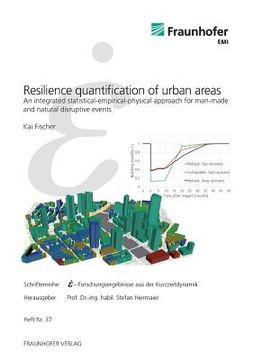Share
Resilience quantification of urban areas.: An integrated statistical-empirical-physical approach for man-made and natural disruptive events. (in English)
Kai Fischer
(Author)
·
Stefan Hiermaier
(Illustrated by)
·
Fraunhofer Verlag
· Paperback
Resilience quantification of urban areas.: An integrated statistical-empirical-physical approach for man-made and natural disruptive events. (in English) - Fischer, Kai ; Hiermaier, Stefan
$ 71.05
$ 90.00
You save: $ 18.95
Choose the list to add your product or create one New List
✓ Product added successfully to the Wishlist.
Go to My WishlistsIt will be shipped from our warehouse between
Friday, May 24 and
Monday, May 27.
You will receive it anywhere in United States between 1 and 3 business days after shipment.
Synopsis "Resilience quantification of urban areas.: An integrated statistical-empirical-physical approach for man-made and natural disruptive events. (in English)"
A growing urbanization, an increasing complexity of critical infrastructure and the formation of new threats are new challenges for urban areas and require a sustainable development and a stronger coping capacity with potential adverse events. Sustainability requires a strenghtening of resilience. Within this work, an integrated mathematical approach for the quantification of resilience is defined. This method allows a comprehensive evaluation of urban areas and the identification of weak spots. Statistical data are combined with physical models to assess the occurrence of multiple threats and their potential consequences. This risk based assessment is combined with time dependent recovery models to result in a quantity for resilience. Results of this framework can be applied to evaluate the effectiveness of single resilience phases, like prepare, prevent, protect, response and recover. Besides the mathematical formulation, application examples in this work assess exemplarily terroristic threats in urban surroundings with empirical information of historical events and engineering models to assess possible structural damage effects. The comparison of different urban footprints builds the basis for a resilient urban planning process.
- 0% (0)
- 0% (0)
- 0% (0)
- 0% (0)
- 0% (0)
All books in our catalog are Original.
The book is written in English.
The binding of this edition is Paperback.
✓ Producto agregado correctamente al carro, Ir a Pagar.

